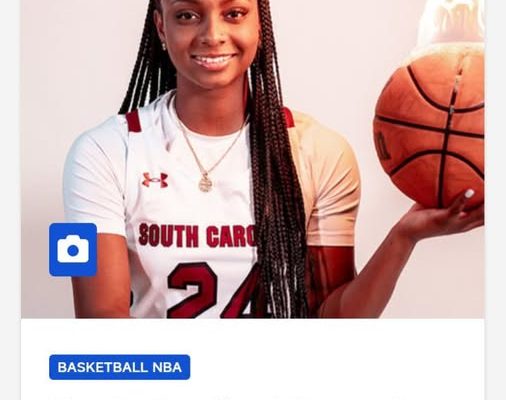As the landscape of women’s college basketball continues to evolve, the transfer portal has emerged as one of the most transformative elements for programs seeking to maintain or establish national dominance. Few programs have leveraged this mechanism as effectively as the South Carolina Gamecocks under the leadership of Hall of Fame coach Dawn Staley. Heading into the 2025–2026 season, South Carolina has not only retained its core talent but has also made shrewd moves in the transfer portal, cementing its reputation as one of the program’s most dominant forces in recent history.
The Gamecocks’ success in the transfer portal is not accidental. It is the culmination of a multi-year strategy that emphasizes both competitive excellence and program culture. Dawn Staley has long emphasized recruiting athletes who fit a specific mold—players who are not only talented but also resilient, team-oriented, and capable of thriving in a high-pressure environment. In the modern era of college basketball, where player movement has become far more fluid, the ability to integrate transfer talent seamlessly into a team’s existing culture is paramount. South Carolina has demonstrated a masterclass in this aspect, positioning itself as a program where incoming transfers see immediate opportunities for development and national exposure.
One of the standout aspects of South Carolina’s offseason activity has been the acquisition of experienced transfers who can make an immediate impact. These athletes are not merely supplemental pieces; they are poised to elevate the team’s performance on both ends of the floor. By targeting players who have already demonstrated high-level skills at other programs, South Carolina reduces the developmental risk and accelerates its readiness for competition. In practical terms, this approach allows the Gamecocks to maintain depth in critical positions, adapt to potential injuries, and remain versatile in strategic matchups against conference and national rivals.
Beyond the tactical benefits, South Carolina’s transfer portal strategy also reflects a broader understanding of the dynamics within women’s college basketball. In a landscape increasingly influenced by NIL (Name, Image, and Likeness) opportunities, high-level competition, and the allure of championship contention, elite players are more willing than ever to transfer to programs that offer both visibility and a realistic path to national success. South Carolina has positioned itself as a premier destination by offering a winning culture, consistent exposure on national television, and a track record of developing professional-level talent. For transfers, joining the Gamecocks is not simply a matter of changing schools—it is a calculated step toward achieving career and competitive aspirations.
Analyzing the specific additions South Carolina has secured this offseason reveals the depth of the program’s strategic thinking. Several transfers bring a combination of scoring ability, defensive acumen, and leadership experience that directly addresses areas of need identified from the previous season. By supplementing an already talented roster, these transfers enhance the team’s ability to contend for SEC supremacy while also preparing for the rigors of the NCAA tournament. Historically, South Carolina has maintained one of the most consistent records of success in the Southeastern Conference, and the infusion of transfer talent positions the program to sustain this dominance in an increasingly competitive environment.
The ripple effects of South Carolina’s transfer portal success extend beyond the immediate impact on the roster. Programs across the nation now view the Gamecocks as a benchmark for strategic portal use, raising the standard for what constitutes effective roster management. Coaches and analysts alike have noted that the combination of retaining homegrown talent and acquiring targeted transfers is a model other elite programs are likely to emulate. In addition, the success of these transfers within South Carolina’s system further underscores the importance of coaching and player development. While raw talent is crucial, the ability to integrate new athletes into established systems, teaching them nuances of defensive schemes, offensive sets, and team chemistry, is what separates championship-level programs from merely competitive ones.
Equally noteworthy is the role that team culture plays in attracting transfer talent to South Carolina. Unlike programs where player movement can disrupt cohesion, the Gamecocks have cultivated an environment where transfers feel welcomed and valued from the outset. This culture of inclusion is reinforced through both formal mechanisms, such as orientation and mentoring programs, and informal aspects, including team rituals and leadership structures. The result is a roster where transfers do not simply fill a spot—they become integral contributors who understand their role within a championship-caliber system. This cultural consistency is essential in a sport where teamwork and trust are non-negotiable factors in achieving success at the highest levels.
The impact of South Carolina’s transfer portal strategy is also evident when examining statistical projections for the upcoming season. Analysts anticipate that the combination of returning players and new transfers will enhance key metrics such as points per game, defensive efficiency, and rebounding margins. Particularly in the SEC, where competition has intensified with programs investing heavily in talent acquisition, these improvements provide a competitive edge. South Carolina’s ability to maintain offensive versatility, defensive intensity, and bench depth ensures that the team is not just reacting to opponents but actively shaping the dynamics of each game.
Moreover, the strategic use of transfers aligns with long-term program sustainability. While recruiting high school talent remains critical, the infusion of experienced collegiate players allows South Carolina to navigate the uncertainties inherent in college athletics, such as injuries, unexpected departures, or changes in eligibility. Transfers provide a layer of stability and adaptability that complements the development pipeline from incoming freshmen, creating a robust roster structure capable of weathering the unpredictable nature of a full season. This blend of youth and experience is a hallmark of elite programs and is one of the reasons South Carolina remains a perennial contender.
In addition to on-court considerations, South Carolina’s proactive transfer portal activity also strengthens the program’s brand and visibility. High-profile transfers generate media attention, elevate the program’s profile in national rankings, and foster excitement among the fan base. This attention can have a positive feedback loop, as prospective recruits are often influenced by the success and visibility of the team they are considering joining. For the Gamecocks, each successful transfer not only contributes to immediate competitiveness but also enhances the program’s reputation, creating a virtuous cycle of attraction and retention for elite talent.
It is also worth acknowledging that the transfer portal is not without challenges. Integrating new players into an established system requires careful management, clear communication, and a commitment to maintaining balance within the roster. South Carolina has demonstrated an aptitude for this integration, blending transfers with returning players in a manner that preserves team identity while enhancing overall performance. By maintaining consistent coaching philosophy and emphasizing collective goals over individual accolades, the Gamecocks ensure that the roster remains cohesive despite the influx of new talent.
As the 2025–2026 season approaches, South Carolina’s position as a transfer portal powerhouse underscores the program’s commitment to innovation and excellence. In an era where player mobility is reshaping the competitive landscape, the Gamecocks serve as a model for how elite programs can strategically leverage the portal to maintain dominance. By combining tactical roster enhancements, a strong developmental culture, and an inclusive team environment, South Carolina has set itself apart from the competition, demonstrating that success in women’s college basketball is as much about strategic acumen as it is about talent alone.
Looking forward, the implications for both South Carolina and the broader college basketball ecosystem are significant. Other programs will undoubtedly seek to replicate the Gamecocks’ approach, placing a premium on transfers who offer immediate impact and cultural compatibility. For South Carolina, maintaining this edge will require continued strategic foresight, careful roster management, and an unwavering commitment to the principles that have made the program successful. Given the team’s track record under Coach Staley, there is every reason to believe that the Gamecocks will continue to thrive, both within the SEC and on the national stage.
In conclusion, South Carolina’s dominance in the transfer portal ahead of the 2025–2026 season is a testament to the program’s strategic vision, operational excellence, and commitment to fostering a culture of winning. By carefully selecting transfers who complement the existing roster, integrating them seamlessly into the team’s culture, and leveraging their experience to enhance on-court performance, the Gamecocks have solidified their position as one of the premier programs in women’s college basketball. As the season unfolds, it will be fascinating to watch how this carefully orchestrated blend of returning stars and incoming talent translates into victories, SEC supremacy, and another deep run in the NCAA tournament. In the modern era of college athletics, where change is constant and competition is fierce, South Carolina has shown that with strategy, culture, and vision, it is possible not only to adapt but to dominate. The Gamecocks are poised to prove that once again in the 2025–2026 season, reinforcing their status as a program synonymous with excellence and a destination for top-tier talent seeking to compete at the highest level.



